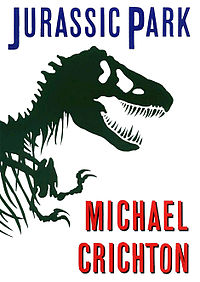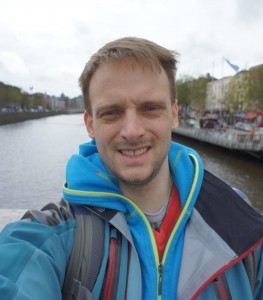 On July 17, Sciobeantown headed over to the Broad Institute in Cambridge, MA to join in on their four week lecture series: Midsummer Nights’ Science. Members of Sciobeantown took to Twitter with the hashtags #broadtalks and #sciobeantown to livetweet the event, which featured a talk from cancer genomics researcher Levi Garraway.*
On July 17, Sciobeantown headed over to the Broad Institute in Cambridge, MA to join in on their four week lecture series: Midsummer Nights’ Science. Members of Sciobeantown took to Twitter with the hashtags #broadtalks and #sciobeantown to livetweet the event, which featured a talk from cancer genomics researcher Levi Garraway.*
If you missed the event, a video of the talk called, “Exploring the genome’s dark matter** what frontiers of genomic research are revealing about cancer” is now online. You can also check out Sciobeantown’s contribution to the Twitter discussion with this Storify of the event by Amanda Dykstra. Thank you to the Broad Institute for setting aside space at this event (which filled the room to capacity) so that Sciobeantown could participate!
*Dr. Garraway is a researcher at the Dana-Farber Cancer Institute, in addition to his work at the Broad Institute and Harvard Medical School. I do cover his melanoma work as part of my job at Dana-Farber.
**Using dark matter as a metaphor for the non-protein coding portion of the genome has been the subject of some science writer snark (possibly from me…okay, from me) but the title of the talk is the title of the talk, folks.
Category: Genetics
SFSYO Scientist of the Month: Philipp Schiffer
Science For Six-Year-Olds (SFSYO for this school year) is a recurring segment on Science Decoded for Mrs. Podolak’s first grade class at Lincoln-Hubbard elementary school. This year the posts are inspired by #iamscience (also a Tumblr) and #realwomenofscience two hashtags on twitter that drove home for me the importance of teaching people who scientists are and what they really do.
Hello first graders! I hope you are all okay and back at school after hurricane Sandy. Now that it is November we have a new scientist of the month. I am so excited to introduce you to Philipp Schiffer who is finishing up his PhD at school in Cologne, Germany. Like I did with Dr. Penny, I asked Philipp a bunch of questions to find out more about what he does. I hope you will enjoy learning more about him. Below you can read my interview with Philipp, and if you’d like to ask him any questions, be sure to leave them in the comments!
***
Erin: What type of scientist are you?
Philipp: I’m an evolutionary biologist [this means he studies genetics, DNA, and how different living things came to be,] currently I’ve morphed into a computer geek but I’m hoping to move away from the computer screen a bit more in the future.
Erin: What did you study in school, and where did you go?
Philipp: I studied Biology, majoring in Zoology with minors in Genetics and Palaeontology. I did most of my studies at the University of Cologne, Germany with some time in Australia studying and catching wombats. I’m currently finishing my PhD thesis in Cologne, but I’ve also studied at the University of California Riverside where I was learning about nematodes. I also got to spend some time in Edinburgh in Scotland.
Erin: Where do you work and what does a typical day at work entail?
Philipp: It’s called the Cologne Biocenter, in the middle of Köln am Rhein. At the moment I am spending most of my working hours in front of my computer, doing science in-silico, which means I am analyzing data from the genome sequencing assays I conduct. In between I hop over to the lab to study the nematodes, look at their DNA or run some other experiments.
Philipp: There is a new and intriguing question to answer every day, more than one on most days. That is the main thing, I am really interested in answering questions about life – why it is the way it is and how did it become like that? Why are species different and how does it happen. There is a woo hoo! moment when things finally click into place and make sense, which is really cool. It is also really nice to work with people around the world – I like the exchange of thoughts and ideas in different cultures. I enjoy talking to colleagues very much, and working with students. It is also fun to be able to listen to music when working, and so much more.
Book Review: Jurassic Park
I’m about two decades late to the party with this book review, but considering I was two years old when Jurassic Park was first published my interest in dinosaurs, genetics, etc. needed a little more time to develop. I have finally read Michael Crichton’s iconic Jurassic Park, and not really surprising anyone I loved it. I have been exposed to the cultural premise of Jurassic Park my whole life, but I’d never read the book or seen the movie, so really it was like my first exposure to the story in its entirety. I found my Dad’s old copy from back when it was first released and decided to rescue it from the book donation bin. I’m glad I did.
 In case you live under a rock and are thus unaware the premise of Jurassic Park is that scientists develop a way to pull dinosaur blood samples out of mosquitoes fossilized in amber. The blood is used to decode the genetic sequence for a variety of dinosaurs and they are then grown and hatched in a lab. An eccentric billionaire funds the project because he believes he can make billions by using the dinosaurs as the main attraction in a theme park. What could go wrong genetically recreating dinosaurs for a modern day tourist attraction? Everyone involved in the project thinks nothing could go wrong, yet things do go awry on the island where the theme park is built causing much dinosaur related havoc.
In case you live under a rock and are thus unaware the premise of Jurassic Park is that scientists develop a way to pull dinosaur blood samples out of mosquitoes fossilized in amber. The blood is used to decode the genetic sequence for a variety of dinosaurs and they are then grown and hatched in a lab. An eccentric billionaire funds the project because he believes he can make billions by using the dinosaurs as the main attraction in a theme park. What could go wrong genetically recreating dinosaurs for a modern day tourist attraction? Everyone involved in the project thinks nothing could go wrong, yet things do go awry on the island where the theme park is built causing much dinosaur related havoc.
I can only speculate what reading the book when it was first published must have been like and how I would have perceived the ideas and lessons in the context of early 90’s technology. Still, even in our current age of high speed genome sequencing I think the warnings in Jurassic Park continue to hold true. Things go wrong because the people working on the dinosaur project don’t give nature enough credit. They think there can’t possibly be a way for their fail-safe measures (creating only female dinosaurs and making them lysine dependent) to be overcome by the dinosaurs. They doubt the intelligence of the life forms they create and their ability to adapt. They also don’t appreciate that they have created something new instead of just recreating the past.
The desire to profit off the dinosaurs is the main priority, leading to a lack of understanding about them and the process that created them. Living in an age of even more advanced scientific ability, I think remembering that there can always be unexpected outcomes with any scientific experiment is important. I am a firm supporter of genomic research, but the key word there is research. Creating a profitable enterprise like the one in Jurassic Park shifts the priority from understanding to economics. Understanding should always be the goal with scientific inquiry and processes, because if we are going to use technology to manipulate, change, or create we need a firm grasp on the what and the how.
Ultimately I think what I took away from Jurassic Park was a sense of respect for science and nature. We can’t take ability for granted. Ethics are important. Why we do things matters as much if not more so than just our base ability to do them. While I know (obviously) that Jurassic Park is a work of fiction, I think it gives a reader a lot to think about regarding research and real-world applications, even after so many years. It is also pretty entertaining, the plot is great but the characters are also well developed and it is definitely action packed. I now need to find the time to watch the movie, and read The Lost World. I’m totally hooked. Have you actually read Jurassic Park? Just seen the movie? How old were you? What did you think? I’d love to know what other people thought when they first encountered the story.
Polar Bears Have The Luck Of The Irish
I recently learned that I share a trait with my absolute favorite animal, the polar bear, in that we can both trace our ancestry back to Ireland. For people who follow this blog, or have at least looked back through the archives a bit, you’ll see that I find it impossible to pass up a good polar bear story. I’ve written about animal healthcare, mysterious death, and the polar bear’s status (or lack thereof) as an endangered species. So it should come as no surprise that I can’t pass up the opportunity to talk about this new research that shows an ancient Irish connection to modern day polar bears.
 |
| via Wikimedia Commons |
A team of researchers led by Beth Shapiro of Penn State University and Daniel Bradley of Trinity College (Dublin) has identified a common ancestor of polar bears (Ursus maritimus) and brown bears (Ursus arctos) that lived in Ireland before the peak of the last ice age some 20,000 to 50,000 years ago. The researchers concluded that all modern day polar bears can trace their lineage back to this ancient female brown bear. The specific lineage of the brown bear that shared their mitochondrial DNA with polar bears went extinct around 9,000 years ago, but the research still shows that the modern species are related.
Despite significant differences between polar bears and brown bears (size, coloring, fur type, tooth shape, swimming ability vs. climbing ability, etc.) scientists have suspected for some time that the species have closely connected histories. The polar bear is known to have mitochondrial DNA (the part of the genome contributed by the mother) that traces back to the brown bear. But how modern polar bears acquired this brown bear DNA was a bit of a mystery.
 |
| via Wikimedia Commons |
The two species are known to interbreed, and have been studied in captivity in addition to being spotted in the wild. An example of a polar bear/brown bear hybrid, jokingly nicknamed grolar bear or pizzly, was found in the wild Canada in 2006. But, even with the knowledge that the two species can co-mingle scientists were still perplexed about the history of these different species. The long standing theory about how polar bears evolved from brown bears had their history traced to the ABC Islands (the Alaskan Islands of Admiralty, Baranof, and Chichagof) around 14,000 years ago. But the bears’ genomes tell us a different story.
The research team led by Shapiro and Bradley found that the hybridization of polar bears occurred much earlier than would have been possible on the ABC Islands through a genetic analysis of the bears. The study analyzed 242 samples from polar bear and brown bear mitochondrial DNA spanning 120,000 years and several different geographical regions. The researchers found that the fixation of the mitochondrial genome in polar bears likely occurred closer to 50,000 years ago in the area of present-day Ireland.
According to Shapiro, in addition to genetic evidence, the interconnected history of the polar bear and brown bear is also supported by climate events. One example of this is the British-Irish ice sheet, which reached its maximum range around 20,000 years ago. At this time parts of Ireland would have been difficult to inhabit, pushing bears from the warmer areas toward ice shelves and land exposed by lower sea levels. This would have brought the bears into close contact with their northern neighbors, showing how the animals that became two different bear species could have started out in the similar location, sharing their genes.
The polar bear is currently considered a threatened species, and future conservation efforts may be aided by this new understanding of its genetic history and its ability to hybridize with the brown bear. The research is described in the paper, “Ancient Hybridization and an Irish Origin for the Modern Polar Bear Matriline” in the journal Current Biology.
History Remains a Mystery: DNA Can’t Confirm Remains Are Amelia Earhart
I use Science Decoded for class and have assignments that require me to post in certain ways. This week I’m ATTEMPTING to write in a diamond structure (writers will know it but that means really specific- big issue- really specific.) I’m going to try to do so by tackling Amelia Earhart and the role of DNA analysis in identifying her possible remains, a subject I previously mentioned in the post What Happened to Amelia Earhart?
 |
| Source: Wikimedia Commons |
With clouds obscuring the stars, Noonan’s ability to navigate would have been heavily compromised. The failure of their radio transmissions would have left Earhart and Noonan unable to ask for help. Landing in the ocean or on one of the South Pacific’s islands may or may not have killed the aviator. She was declared dead, but some say she could have survived the landing and lived for awhile as a castaway. This theory was buoyed in 2010 by the discovery of three bone fragments that might be a human finger on Nikumaroro (formerly known as Gardner Island) in the Republic of Kiribati.
The International Group for Historic Aircraft Recovery (TIGHAR) took up the mystery of what happened to Earhart and Noonan and the possibility that the 1940 Nikumaroro bones were either the aviator or her navigator in 1988. An analysis of records from Fiji conducted by TIGHAR forensic anthropologists based on new computerized technology indicate that the initial analysis was wrong and the remains belonged to a white female.
 |
| Nikumaroro Map. Source: Flickr. |
The initial test for the presence of human mitochondrial DNA conducted by Lewis was positive, but subsequent tests did not replicate that result. Because the process of extracting DNA damages the bone, further attempts to determine the bone’s origin would use up the rest of the sample. Doing so would make independent replication – a crucial part of the scientific process in which other scientists conduct the same experiment to make sure that the results are valid – an impossibility.


